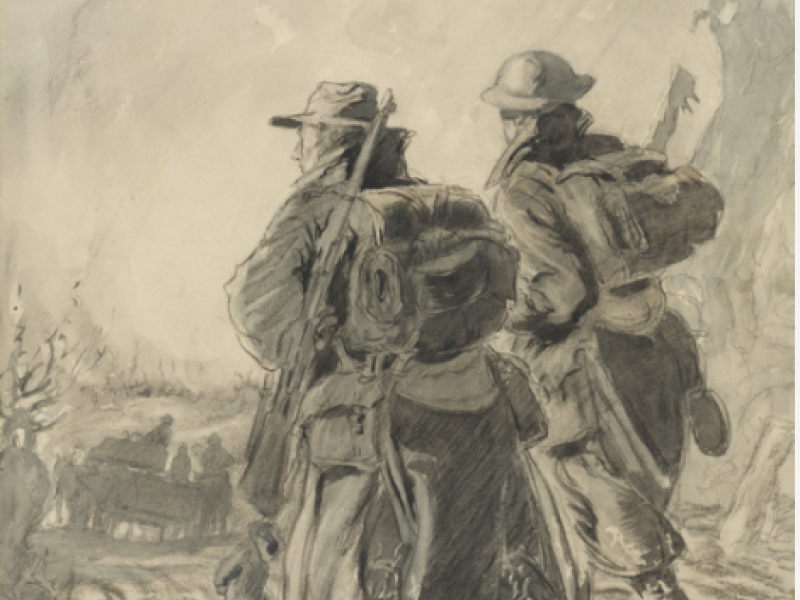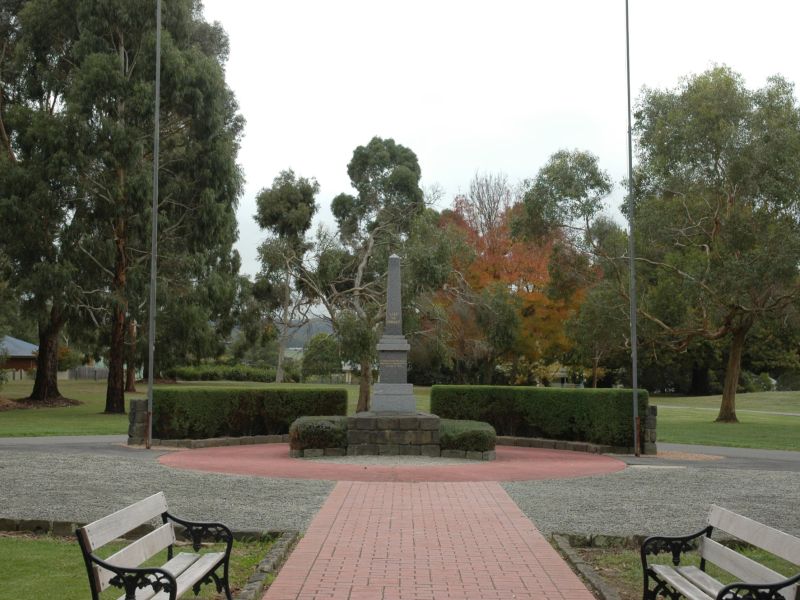Corporal William Ernest Verdon, 21st Battalion, AIF
William Verdon, known as “Willie” or “Bill”, was born in 1892 to Stephen and Bridget. His mother owned a green grocer’s in Mirboo North for 30 years, and was sole parent to ten children; her husband, an alcoholic, left the family.
Verdon went to Mirboo North state school then worked on the railways in Donald, Victoria. Nearly all his siblings left the district as they grew up but remained close.
William Verdon enlisted in the Australian Imperial Force with one of his closest friends, Ben Esposito, in January 1915. After training, the two embarked with the 21st Battalion in May 1915.
They arrived at Anzac Cove in September but left again for Egypt and then France, in March 1916.
In July 1916, at Pozieres, they provided carrying parties to the front line, regularly under heavy shell-fire. Verdon and Esposito were proven able soldiers.
Verdon wrote home, “Ben Esposito (my mate) had received a military medal … I was also mentioned in despatches, but I don’t know what for.” In fact it was for “consistent gallantry in action both in the line at Fleurbaix … and also during operations on the Somme.” By October, he had been promoted to corporal.
By December the fighting on the Western Front had slowed as a bitterly cold winter closed in. Australian divisions rotated in and out of the front line to provide basic defence but were not in major operations. However, the front was still very dangerous.
On 22 December 1916, Verdon went to see some of his friends in the machine-gun section. Rather than wind his way through the communication trenches, he went over the top. The gunners called to him to get into the trench but he was shot by German soldiers just a few metres away. Esposito, who saw it happen, recalled, “he died without a murmur”.
Esposito was distraught at the loss of his best mate. Much later, he wrote to a friend, “It is hard to write about Bill. I can’t realise it myself. My old pal gone. My proudest thought is that Bill called me friend.”
Corporal Verdon’s body lay out in the open for a week, it being too dangerous to retrieve. Despite the danger, Ben Esposito and another mate, Bruce Taylor, volunteered to get his body so they could bury him.
They carried a heavy wooden cross over seven miles of broken ground. Finding Verdon’s body just 20 metres from a German trench they buried him with their hands to avoid attracting fire. Just as they finished, a shell landed nearby, blowing Ben several feet in the air and knocking Bruce’s hat off. They made it back safely.
After the war, Verdon’s grave was moved, and today he lies in Bancourt British Cemetery under the simple inscription “R.I.P”. He was 24 years old.
Meleah Hampton, Historian, Military History Section
Image: “Looking for the battalion” depicts two soldiers with full kit walking in a war damaged landscape, along the Western Front, France. Artist: Will Dyson, 1917
- Looking for the battalion https://www.awm.gov.au/collection/C169781

 Australian War Memorial
Australian War Memorial